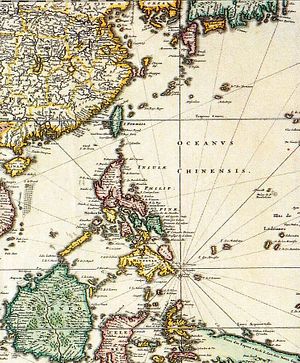In this delightful, enlightening book, Peter Gordon, the editor of the Asian Review of Books (to which I regularly contribute), and Juan Jose Morales, who writes for the Spanish magazine Compromiso Empresarial, provide a needed corrective to the history of globalization by giving East Asia and Spanish America their due as the originators of the global economy.
The key date is 1565, the year that Andres de Urdaneta, one of the lesser-known Iberian explorers, successfully sailed back across the Pacific Ocean from the Philippines to Acapulco in New Spain. “For the first time,” the authors explain, “European ships could reliably sail the Pacific in both directions.” What became known as “Urdaneta’s route” started the voyages of the Manila galleons or “China ships,” which carried trade from East Asia to Spanish America and back for the next 250 years.
Manila served as the “entrepot” where Chinese and Japanese silk, Indian cotton, spices from the Spice Islands, and ivory from Southeast Asia were collected for shipment on this first transoceanic line to customers in New Spain, part of Charles V’s and later Phillip II’s vast empire over which the sun never set.
It was the birth of a truly global economy, with trade networks touching four continents, the rise of integrated global financial markets, the world’s first global currency (the Spanish-milled silver dollar), and the rise of an economic superpower — China. Mexico City, the authors note, was the “first world city,” the precursor to London, New York, and Hong Kong, where “Asia, Europe, and the Americas all met, and where people intermingled and exchanged everything from genes to textiles.” The authors estimate, for example, that as many as 100,000 Asians ended up settling in New Spain as a result of the Manila-to-Acapulco trade route.
The journeys back and forth across the Pacific could be hazardous, but fortunes were made. Silver was discovered in New Spain and it soon “became the main commodity of the Manila galleon trade.” “[A] staggering amount of silver,” the authors write, “passed annually from the Americas into the Chinese money supply.” Gordon and Morales believe that it was this “silver road,” instead of the silk road, “that changed the global economy forever.”
The authors note but do not fully explain why the “Silver Way” gave way to Anglo-American global dominance and the establishment of a maritime world order in the 19th century and thereafter. H.J. Mackinder in Democratic Ideals and Reality and, more recently, Walter Russell Mead in God and Gold and Niall Ferguson in Civilization, have pointed to the dynamism of capitalism (what Mackinder called the “going concern”) and political liberty as two likely answers.
Gordon and Morales conclude their fascinating book with the observation that a rising China need neither converge with the West nor become the West’s enemy. Twenty-first century globalization, they suggest, might instead resemble the 16th and 17th century model, where East and West stand “in precarious balance, simultaneously cooperating and seeking advantage.” We can only hope they are right.
Francis P. Sempa is the author of Geopolitics: From the Cold War to the 21st Century and America’s Global Role: Essays and Reviews on National Security, Geopolitics and War.

































